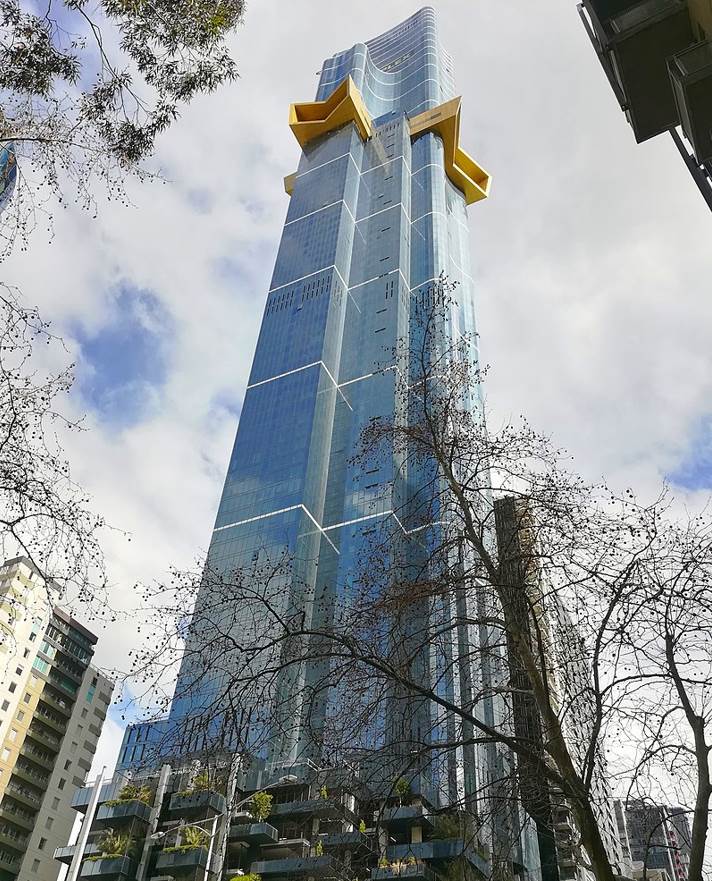The second most populous city in Australia is home to a wide variety of structures. This includes amazing skyscrapers (67 in total) and historic buildings, a remarkable combination.
Over 5.1 million people live in Greater Melbourne which makes it by far the largest city in Victoria. This is only slightly less than the most populous city in Australia, Sydney in New South Wales which has a population of over 5.3 million inhabitants.
In this article, we’ll take a closer look at some of the most famous buildings in Melbourne, structures that define this amazing city Down Under.
1. Eureka Tower
The Eureka Tower is one of the most remarkable skyscrapers in Melbourne. This residential tower stands 297.3 meters (975 feet) tall which makes it the second-tallest building in the city and the third-tallest in Australia.
The building is located in the Southbank district in the city and features an observation deck right near the top called “The Eureka Skydeck.” At a height of 285 meters (935 feet), it provides stunning views of the city.
Official website: Eureka Skydeck
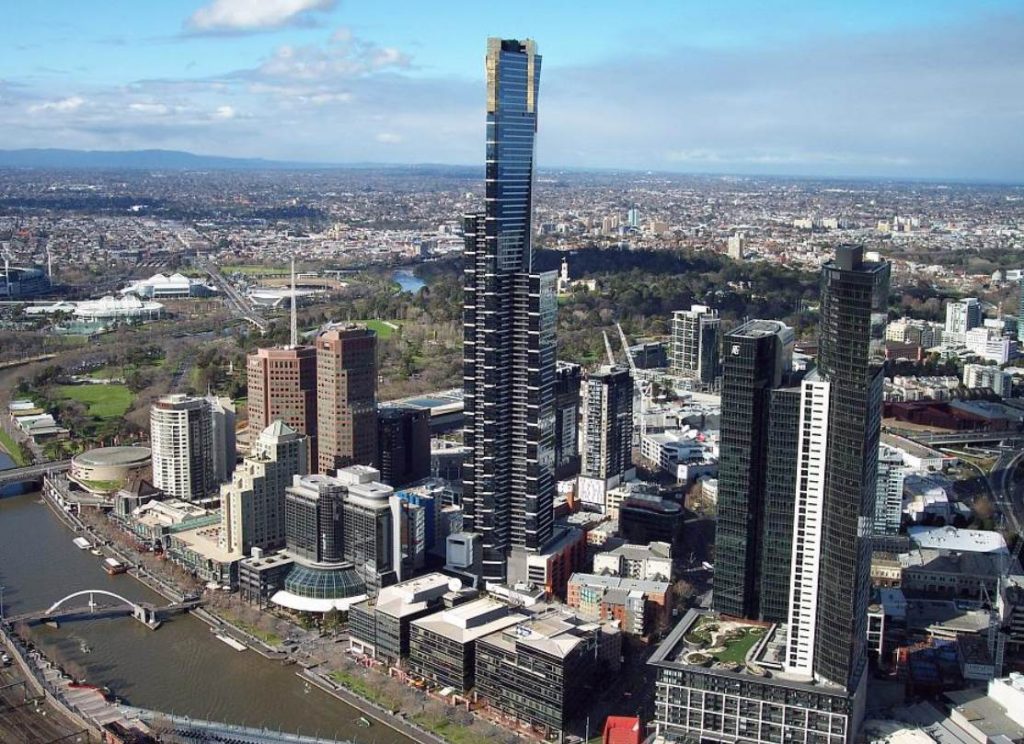
2. Melbourne Cricket Ground
The Melbourne Cricket Ground is often abbreviated as just MCG and nicknamed “The G.” It’s an enormous stadium and the centerpiece of Yarra Park, a large sports complex in the heart of the city. Ith a capacity of 100,024 it’s also the biggest stadium in Australia.
Despite being referred to as a cricket ground, it’s also extensively used for Australian Football, the Australian version of football, as a concert venue, and several other sporting events. It was originally constructed in 1853 and has been expanded several times throughout its history.
Official website: MCG
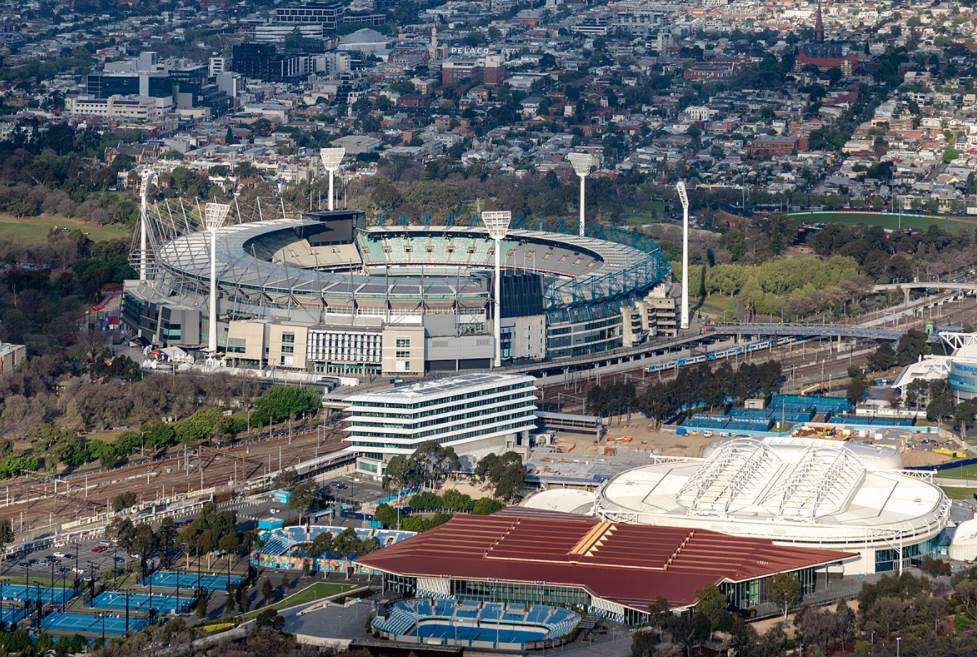
3. Melbourne Town Hall
Melbourne Town Hall is a historic building in the heart of the city that was completed between 1867 and 1870. It’s located in what is today the city’s central business district and is still the seat of the local district within the City of Melbourne.
The building has been expanded several times throughout its history and was largely rebuilt after a devastating fire in 1925. The building was constructed in the French Second Empire style of which the Palais Garnier in Paris is the prime example.
Official website: Melbourne Town Hall
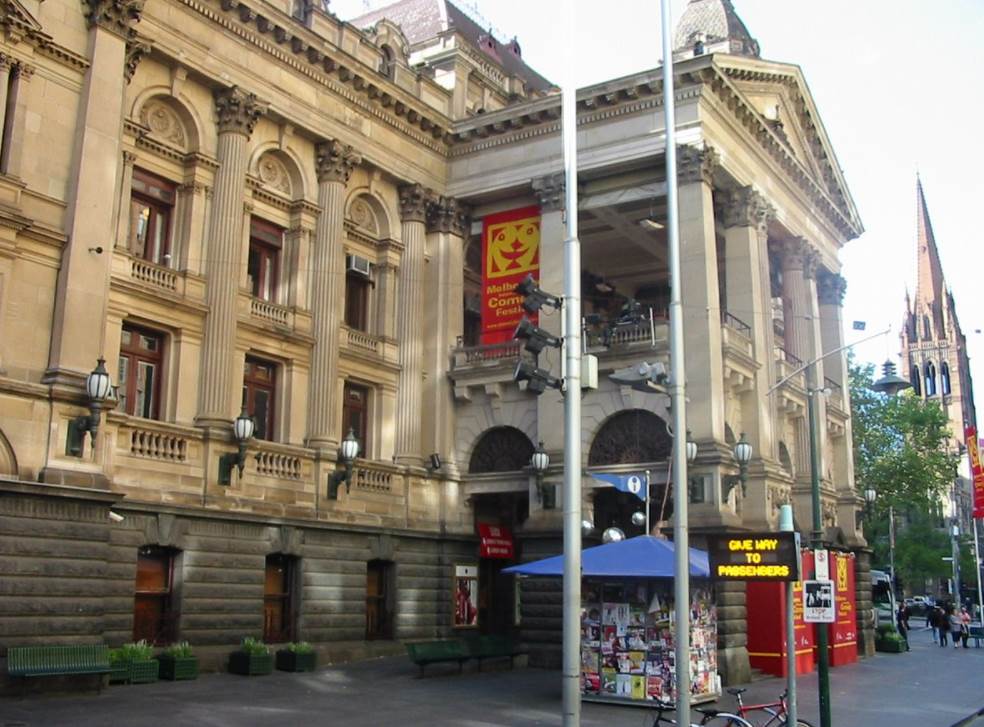
4. Flinders Street Station
Flinders Street Station is another fascinating historic building in the city that is located in the city’s central business district. The first train station on this location was opened in 1854 and was called the “Melbourne Terminus.”
The current building of the train station was completed in the first decade of the 20th century and was designed in the distinctive Edwardian architectural style. It’s considered to be one of the most iconic buildings in Melbourne.
Official website: Flinders Street Station
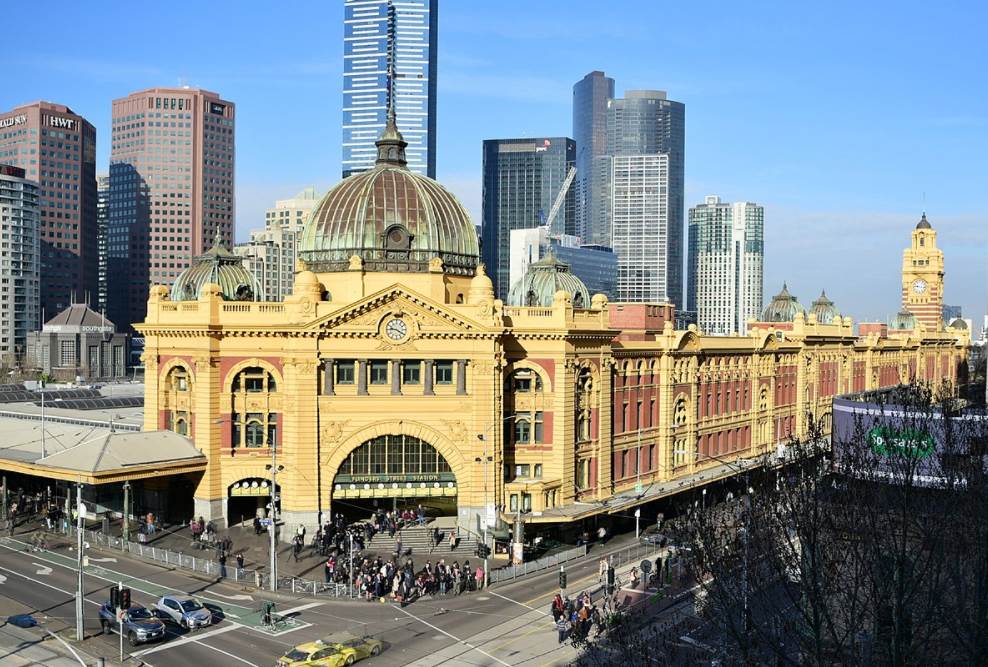
5. Shrine of Remembrance
The Shrine of Remembrance is one of the greatest monuments in Australia. It serves as a war memorial for every Australian that ever fought in a war. It’s commonly known as “The Shrine” and is located just west of the Royal Botanic Gardens Victoria in a park called “Kings Domain.”
The building was completed in 1934 and originally served as just a war memorial for Australians who had served in World War I. It features a Neoclassical design and was based on the Mausoleum at Halicarnassus, a now-demolished 4th century B.C. building and an Ancient Wonder of the World.
Official website: Shrine

6. Royal Exhibition Building
The Royal Exhibition Building is a historic building in Melbourne that was designed as a UNESCO World Heritage site in 2004. It was the first building in Australia to receive this honor because it’s considered to be of extremely high historic value.
The building is located on the northeastern edge of the central business district and was constructed between 1879 and 1880. It was purposely built for the Melbourne International Exhibition of 1880-1881 and was designed in the Beaux-Arts style.
Official website: Royal Exhibition Building
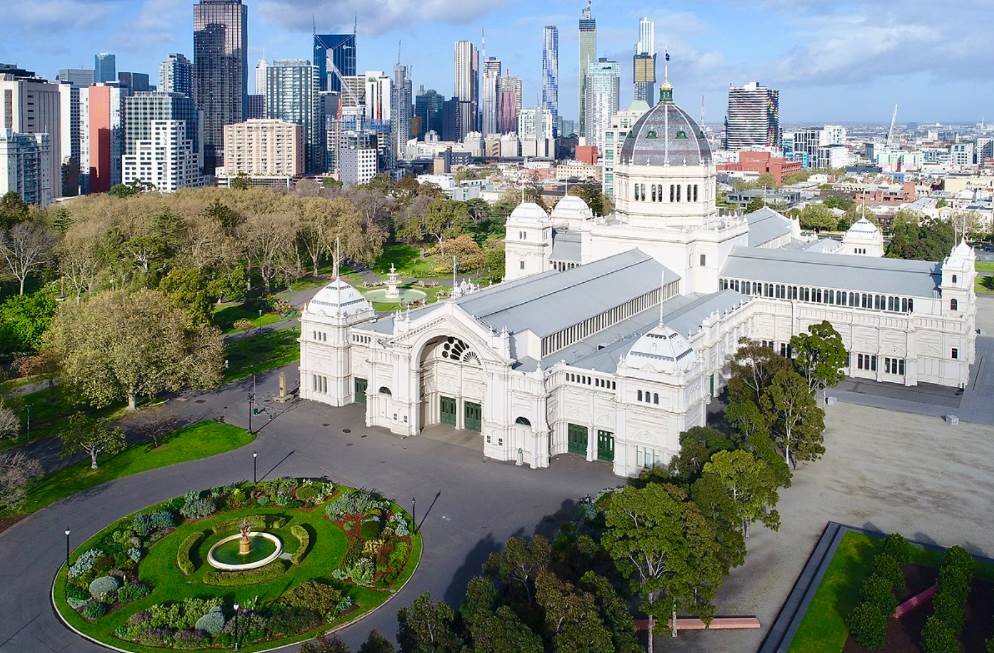
7. Old Treasury Building
The Old Treasury Building was constructed between 1858 and 1862 and is one of the most amazing 19th-century buildings in Melbourne. It was built to serve as the headquarters of the Treasury Department of the Government of Victoria and now partially serves as a museum.
It’s a fine example of the Renaissance Revival architectural style. This means that it resembles the Renaissance buildings that we can find in major cities in Italy, especially the Palazzo Pitti in Florence and the Palazzo Farnese in Rome.
Official website: Old Treasury Building
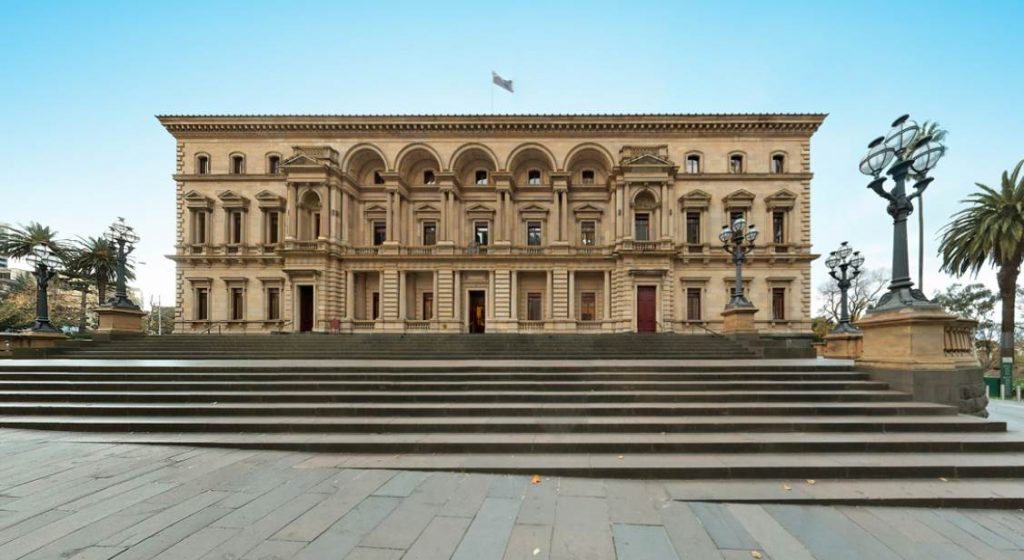
8. St Paul’s Cathedral
St. Paul’s Cathedral is the main cathedral in the city and the seat of the archbishop of Melbourne. This Anglican church shares its name with St. Paul’s Cathedral in London, the most famous church in the city. It’s located on Flinders Street, just north of Flinders Street Station.
It doesn’t share the same architectural design, though, because the church in Melbourne is one of the greatest Gothic Revival Buildings in the city. The main structure was completed in 1891 and the spires were added between 1926 and 1932.
Official website: St. Paul’s Cathedral
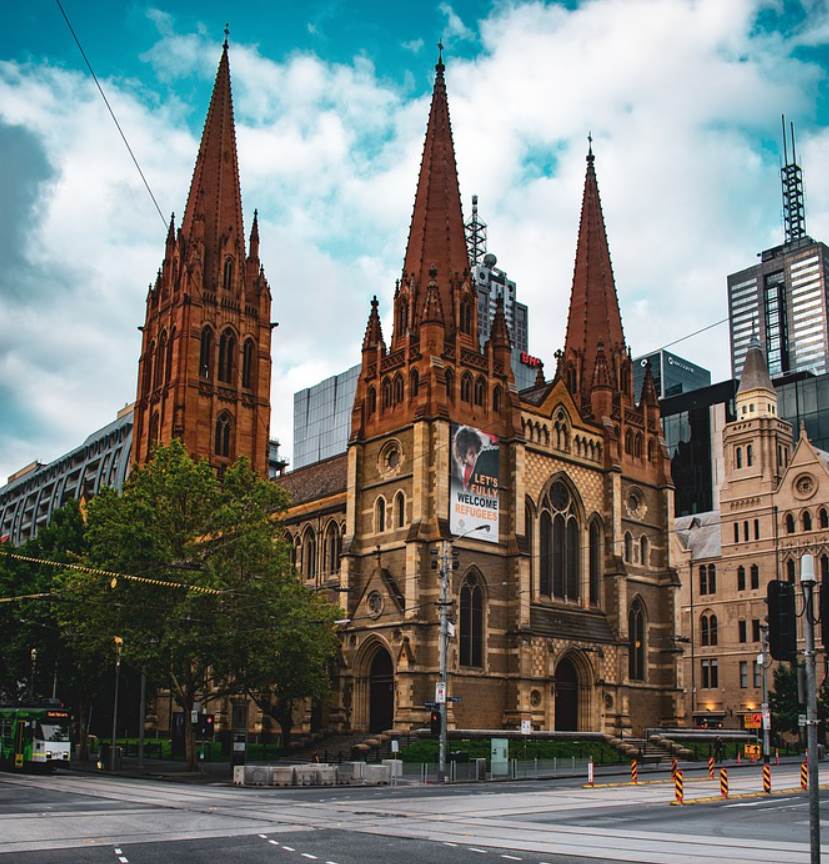
9. Victoria Barracks
Victoria Barracks is yet another historic building in Melbourne that was constructed between 1856 and 1872. Unlike Hyde Park Barracks in Sydney, it wasn’t constructed to serve as a detention center but to house British Imperial Garrison troops.
The structure served as the headquarters of the Department of Defence between 1901 and 1958. This military complex is located just northwest of Kings Domain, the large park where you can find the Shrine of Remembrance.
Official website: Victoria Barracks
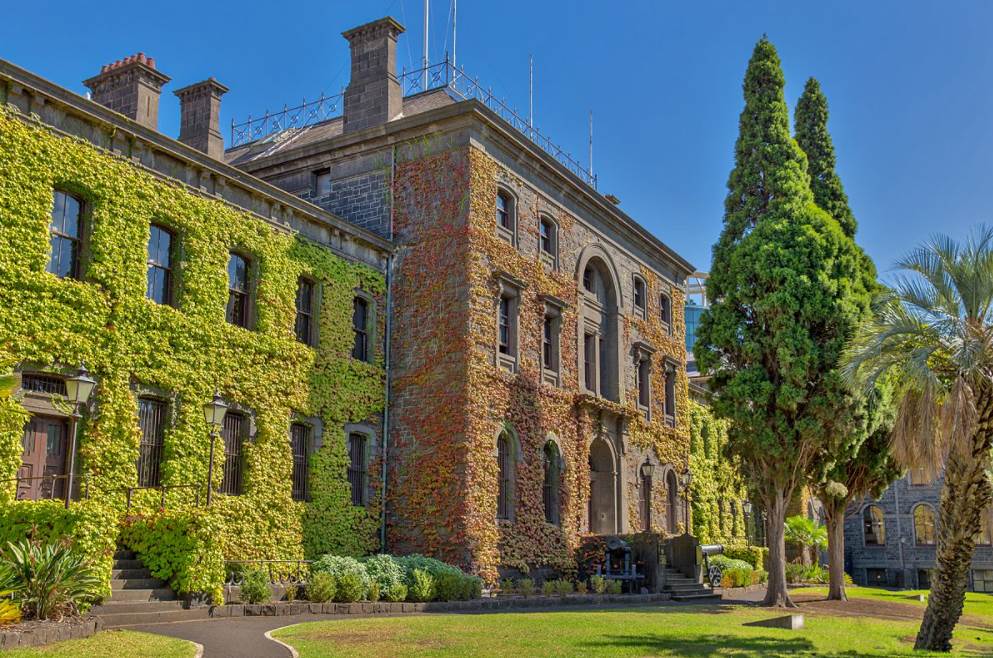
10. Australia 108
Australia 108 is the reason why the Eureka Tower is only the second-tallest building in Melbourne today. This supertall skyscraper topped out in 2019 and reaches a height of 316.7 meters (1,039 feet). The top floor features the “Tallest home in the Southern Hemisphere.”
It’s another residential skyscraper that features an astounding 1,105 apartments divided among 100 floors. The name Australia 10 is a reference to the original plan of the skyscraper which was supposed to have 108 floors. This plan was shelved when regulatory requirements couldn’t be met.
Official website: Australia 108
